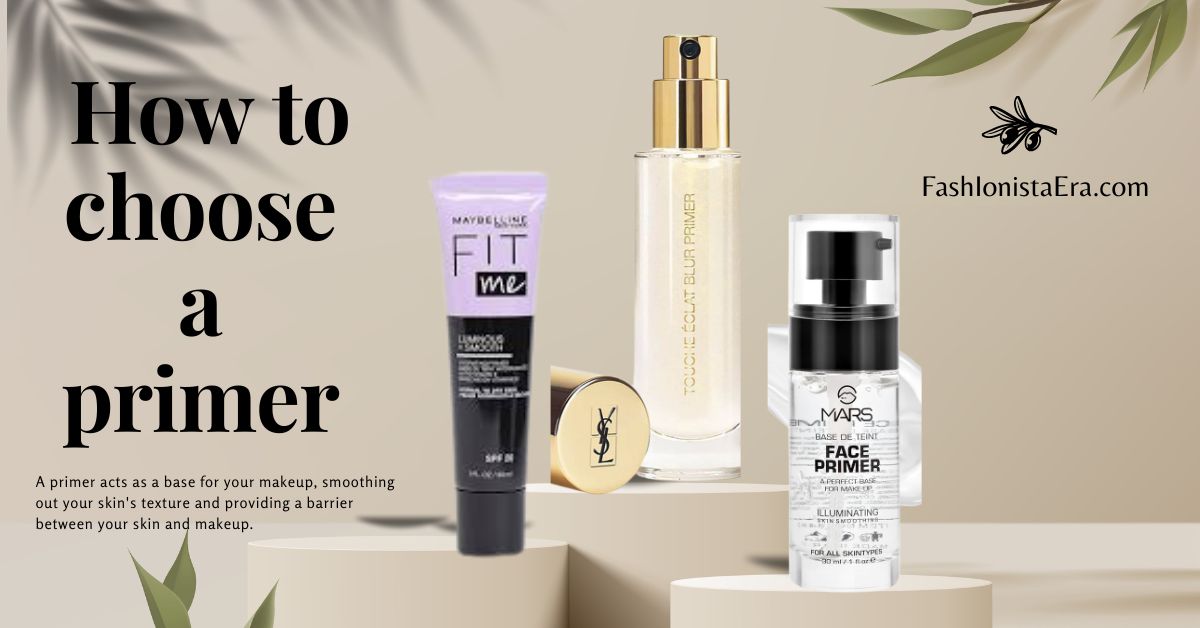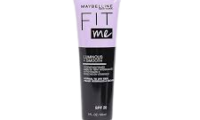Table of Contents
As a makeup enthusiast, I understand the importance of using a primer before applying foundation. A primer acts as a base for your makeup, smoothing out your skin’s texture and providing a barrier between your skin and makeup. However, choosing the right primer for your skin type can be a daunting task. In this ultimate guide, I will walk you through the different types of skin and their primer needs, how to choose a primer for each skin type, and the ingredients to look for in a primer.
What is a primer and why you need it?
A primer is a makeup product that is applied before foundation or any makeup. It is designed to prepare your skin for makeup application and to make it last longer. A primer creates a barrier between your skin and makeup, preventing the foundation from settling into fine lines, pores, or wrinkles. It also helps to even out skin tone, minimize the appearance of pores, and control oiliness.
Primer is a must-have product for anyone who wants their makeup to last longer and look flawless. It is especially beneficial for those with oily skin, as it helps to control oiliness and keep the makeup in place for longer. Regardless of skin type, using a primer can make a significant difference in the overall appearance and longevity of your makeup.

Different types of skin and their primer needs
Before choosing a primer, it is essential to understand your skin type and its specific needs. Here is a breakdown of different skin types and the primer needs of each.
Normal Skin
Normal skin is not too dry or too oily and has a balanced level of moisture. If you have normal skin, you can use any type of primer, depending on your preference. Look for a primer that is lightweight and hydrating, as it will provide a smooth base for your makeup without making your skin feel greasy. A silicone-based primer can also work well for normal skin, as it fills in pores and fine lines.
Combination Skin
Combination skin is a mix of oily and dry skin. If you have combination skin, look for a primer that can balance both types of skin. A water-based primer can work well for combination skin as it hydrates dry areas and controls oil in oily areas. Also, look for a primer that is mattifying to control the T-zone area.
Oily Skin
Oily skin produces excess oil, making it prone to breakouts, acne, and clogged pores. If you have oily skin, look for a primer that is oil-free and mattifying. A silicone-based primer can work well for oily skin as it fills in pores and controls oil. Additionally, look for a primer that contains salicylic acid, which helps to unclog pores and prevent breakouts.
Dry Skin
Dry skin lacks moisture, making it prone to flakiness, dullness, and fine lines. If you have dry skin, look for a primer that is hydrating and nourishing. A water-based primer can work well for dry skin as it provides a boost of hydration. Additionally, look for a primer that contains hyaluronic acid, which helps to retain moisture and plump up the skin.
Sensitive Skin
Sensitive skin is easily irritated and prone to allergic reactions. If you have sensitive skin, look for a primer that is gentle and hypoallergenic. A silicone-based primer can work well for sensitive skin as it is gentle and non-irritating. Additionally, look for a primer that contains chamomile or aloe vera, which help to soothe and calm the skin.
How to choose a primer for normal skin
If you have normal skin, you have a wide range of primer options to choose from. However, to choose the best primer for your skin type, consider the following factors while choosing a right primer for normal skin:
Type of primer
There are different types of primers, including silicone-based, water-based, and oil-free. Choose a primer that suits your skin type and preference.
Finish
Primers come in different finishes, including matte, dewy, and luminous. Choose a finish that complements your skin type and preference.
Ingredients
Look for a primer that contains ingredients that benefit your skin type. For normal skin, look for a primer that is hydrating and lightweight.
How to choose a primer for combination skin
If you have combination skin, you need a primer that can balance both oily and dry areas. Here’s what to consider while choosing a right primer for combination skin:
Type of primer
A water-based primer is an excellent choice for combination skin as it hydrates dry areas and controls oil in oily areas.
Finish
Look for a primer with a matte finish to control the T-zone area.
Ingredients
Choose a primer that contains ingredients that hydrate the dry areas and control oil in oily areas.
How to choose a primer for oily skin
If you have oily skin, you need a primer that can control oil and prevent breakouts. Here’s what to consider:
Type of primer
An oil-free primer or a silicone-based primer can work well for oily skin as it fills in pores and controls oil.
Finish
Look for a primer with a matte finish to control oiliness.
Ingredients
Choose a primer that contains salicylic acid, which helps to unclog pores and prevent breakouts.
How to choose a primer for dry skin
If you have dry skin, you need a primer that can hydrate and nourish your skin. Here’s what to consider:
Type of primer
A water-based primer can work well for dry skin as it provides a boost of hydration.
Finish
Look for a primer with a dewy or luminous finish to give your skin a healthy glow.
Ingredients
Choose a primer that contains hyaluronic acid, which helps to retain moisture and plump up the skin.
How to choose a primer for sensitive skin
If you have sensitive skin, you need a primer that is gentle and non-irritating. Here’s what to consider:
Type of primer
A silicone-based primer can work well for sensitive skin as it is gentle and non-irritating.
Finish
Look for a primer with a matte or dewy finish, depending on your preference.
Ingredients
Choose a primer that contains chamomile or aloe vera, which help to soothe and calm the skin.

Ingredients to look for in a primer
When choosing a primer, it is essential to check the ingredients to ensure that they are suitable for your skin type. Here are some ingredients to look for:
Hyaluronic Acid
Hyaluronic acid is an excellent ingredient for dry skin as it helps to retain moisture and plump up the skin.
Salicylic Acid
Salicylic acid is an excellent ingredient for oily skin as it helps to unclog pores and prevent breakouts.
Chamomile
Chamomile is an excellent ingredient for sensitive skin as it helps to soothe and calm the skin.
Aloe Vera
Aloe vera is an excellent ingredient for sensitive skin as it helps to soothe and calm the skin.
How to apply primer for best results
Once you have chosen the right primer for your skin type, it’s essential to apply it correctly for the best results. Here’s how to apply primer:
- Start with a clean and moisturized face.
- Apply a pea-sized amount of primer to your fingertips.
- Gently apply the primer all over your face, focusing on problem areas such as fine lines, pores, or dry patches.
- Wait for a few minutes before applying foundation or any makeup.
Conclusion: Finding the best primer for your skin type
Choosing the right primer for your skin type can make a significant difference in the overall appearance and longevity of your makeup. Consider your skin type, the type of primer, the finish, and the ingredients when choosing a primer. Don’t forget to apply it correctly for the best results. With this ultimate guide, you can find the best primer for your skin type and achieve flawless makeup every day.
CTA:
If you have any questions or need help related to how to choose a primer for your skin type, feel free to contact us. We are always ready to help you.
Is there a specific shade of Primer that suits all skin tones?

The short answer is no. Every person has different skin tones and textures, which require different primers. Primer helps to create a smooth canvas for your makeup and it should blend seamlessly with your skin tone. It’s important to find the right shade of primer that works best for you, as this will ensure that your makeup will look flawless throughout the day.
